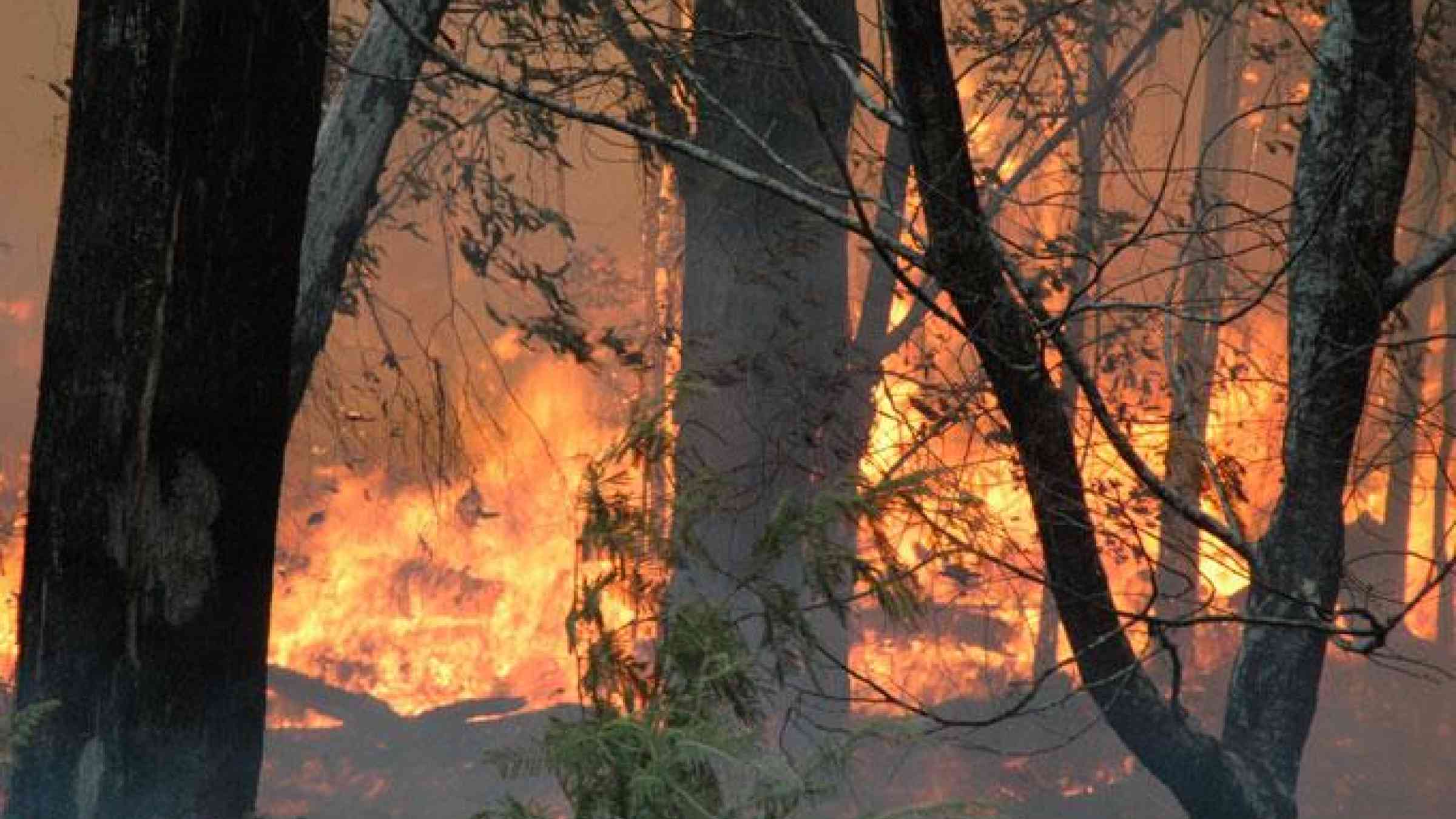Natural disasters to cost Australia $33 billion per year by 2050

The total annual cost of natural disasters in Australia is expected to increase from $9 billion to $33 billion by 2050, according to two reports launched by the Australian Business Roundtable for Disaster Resilience & Safer Communities (the Roundtable).
The reports, The Economic Cost of the Social Impact of Natural Disasters, and Building Resilient Infrastructure, deliver the first economic analysis of the social impact of natural disasters, and the benefits of ensuring infrastructure assets are more resilient to extreme weather events. They build on the previous work of the Roundtable to call for a better way to prepare for natural disasters.
Speaking on behalf of the Roundtable, IAG Managing Director and CEO Peter Harmer said the two new reports, prepared by Deloitte Access Economics, reveal that social devastation and the impacts to infrastructure can be the longest lasting and most significant consequences of natural disasters.
“The reports show the long-term cost of the social impact of natural disasters on our communities and economy, and the benefits of embedding resilience into planning decisions for critical infrastructure. We need to do more to help our communities prepare for and recover from disasters. Sadly the devastation of bushfires, flood and earthquakes on our communities can last for years, if not decades,” Mr Harmer said.
Including the economic costs of the social impact of natural disasters
Australian Red Cross Director of Australian Services, Noel Clement, said the framework developed in The Economic Cost of the Social Impact of Natural Disasters revealed the true cost of natural disasters was at least 50% greater than previously estimated.
“This report is the first time that analysis into the economic cost of the social impacts of natural disasters has been conducted, filling a critical gap in the research on the medium and long-term impact of disasters on our communities,” he said.
The report found that when social impacts such as mental health issues, family violence, chronic disease and alcohol misuse, are included, the total cost of natural disasters would average $33 billion per year in real terms by 2050.
“Deloitte’s modelling showed that last year’s spate of natural disasters left a damage bill of more than
$9 billion, which was about 0.6% of our Gross Domestic Product (GDP), and this is expected to double by 2030,” he said.
“Governments, business and communities need to work together to address the medium and long- term social impacts of natural disasters through further investment and research into community resilience programs.”
Highlighting three specific case studies from differing regions and periods – the 2010-2011 Queensland floods, the 2009 Victoria Black Saturday bushfires and the 1989 Newcastle earthquake – the report estimates social costs are at least as much as, if not higher than, tangible costs such as the destruction of property.
Building Resilient Infrastructure
The Building Resilient Infrastructure report found that $17 billion will need to be spent on the direct replacement of critical infrastructure such as roads, railways and hospitals up to 2050, as a result of natural disaster events.
Optus Chairman Paul O’Sullivan said: “Optus is a major investor in infrastructure with more than $1 billion spent annually over the past 10 years and around $1.8 billion this year.
“As we have undertaken our own climate change review, it is clear that there is a need for stronger central coordination across government and other infrastructure providers, and an opportunity to embed resilience into government policy and planning activities. The report issues practical guidelines to address this.”
The report provides guidance and a set of principles for government and business to integrate disaster resilience in infrastructure planning, appraisal and approval processes.
Mr O’Sullivan said the recommendations were timely as total spending on infrastructure in Australia between now and 2050 is projected to reach approximately $1.1 trillion.
Key findings and recommendations
The Economic Cost of the Social Impact of Natural Disasters
Key findings:
- The true cost of natural disasters is at least 50% greater than previously estimated when social costs are incorporated.
- When both financial and social costs are included, it is estimated the total cost of natural disasters in Australia in 2015 exceeded $9 billion, or 0.6% of GDP. This is expected to double by 2030 and to reach an average of $33 billion per year by 2050.
Report recommendations:
- Pre and post-disaster funding should better reflect the long-term nature of social impacts.
- A collaborative approach involving government, business, not for profits and community is needed to address the medium and long-term economic cost of the social impact of natural disasters.
- Governments, businesses and communities need to further invest in community resilience programs that drive learning and sustained behaviour change.
- Further research must be done into ways of quantifying the medium and long-term costs of the social impacts of natural disasters.
Building Resilient Infrastructure
Key findings:
- More than $450 million was spent by Australian governments each financial year on restoring essential public infrastructure assets following extreme weather events between 2002-03 and 2010-11. This equates to about 1.6% of total public infrastructure spending.
- $17 billion (in net present value terms) will need to be spent on the direct replacement costs of essential infrastructure impacted by natural disasters between 2015 and 2050.
- Total spending on infrastructure between now and 2050 in Australia is projected to reach approximately $1.1 trillion.
Report recommendations:
- Infrastructure planning processes to be improved to integrate resilience in government and industry decision making by adopting the principles for resilience.
- Improve incentives through policy change and funding arrangements that ensure disaster resilience has been considered and incorporated, where appropriate, into infrastructure planning.
- Invest to strengthen the technical capacity of practitioners to identify, analyse and evaluate the costs and benefits of resilience options.
Media contacts
Michelle Chaperon
T 02 9292 3166
M 0438 406 687
[email protected]
Amanda Wallace
T 02 9292 9441
M 0422 379 964
[email protected]